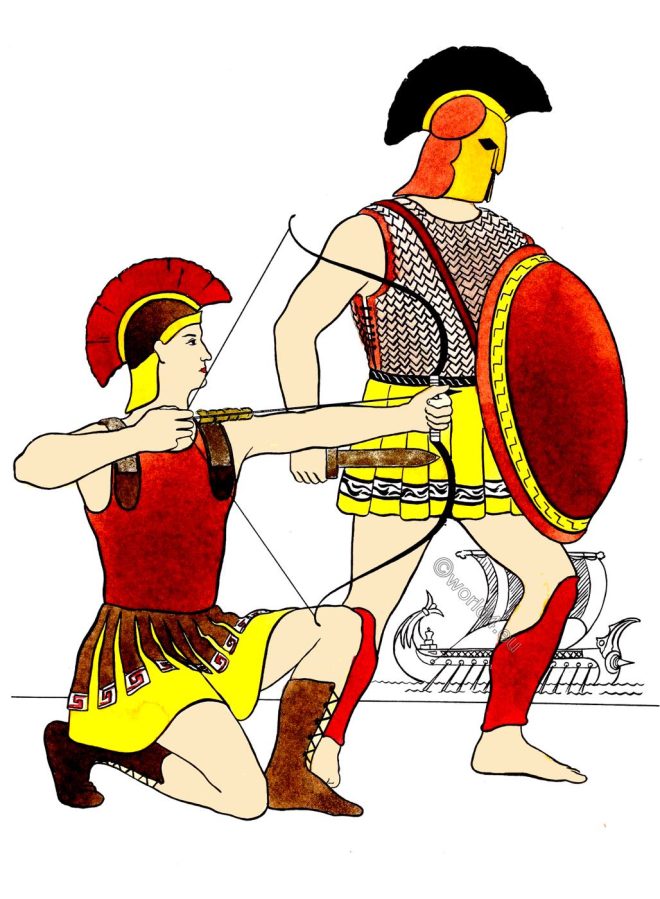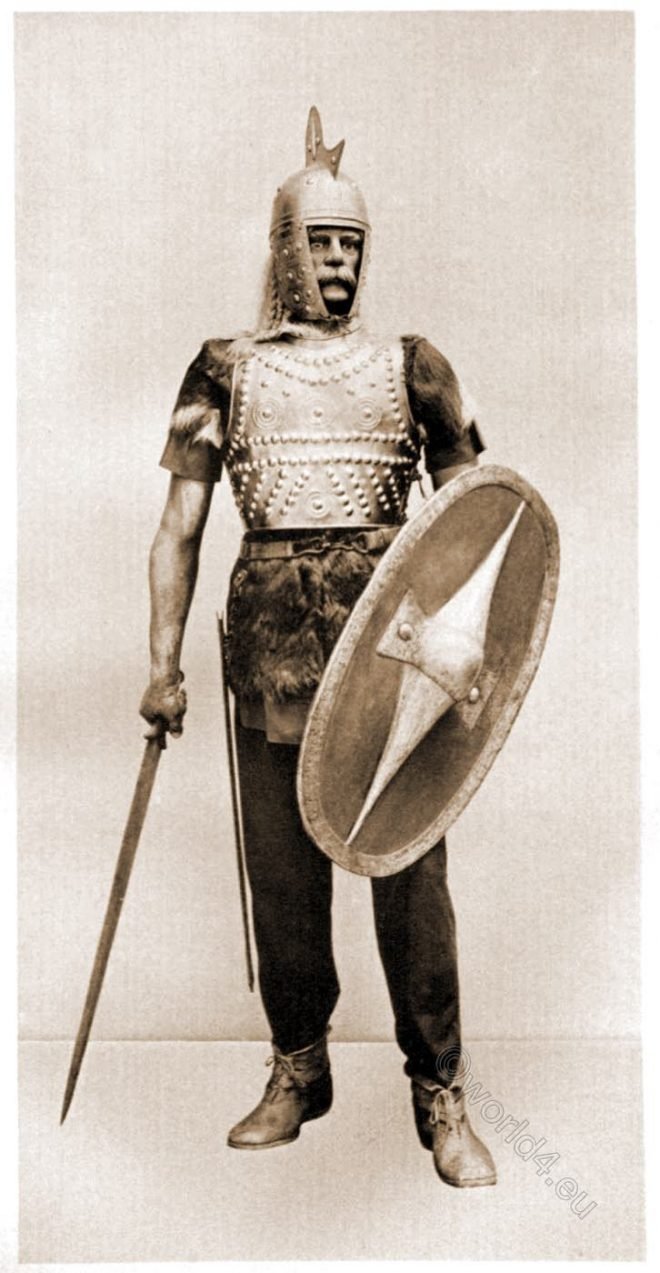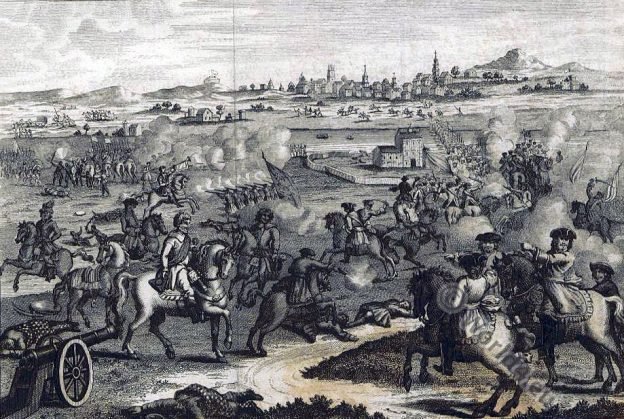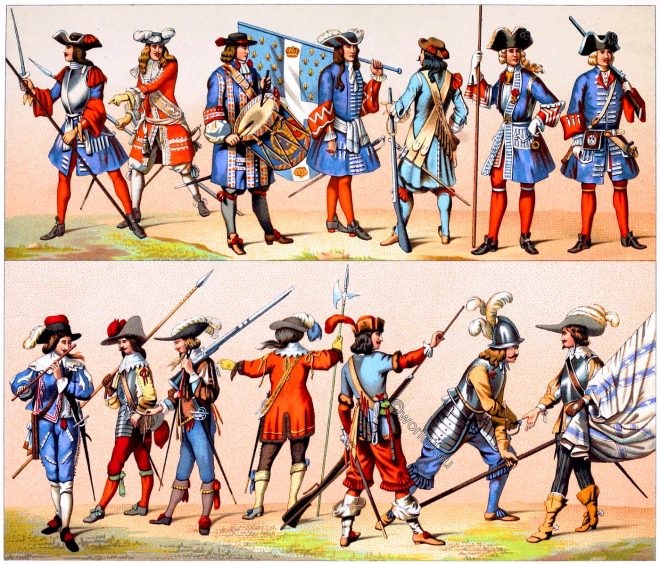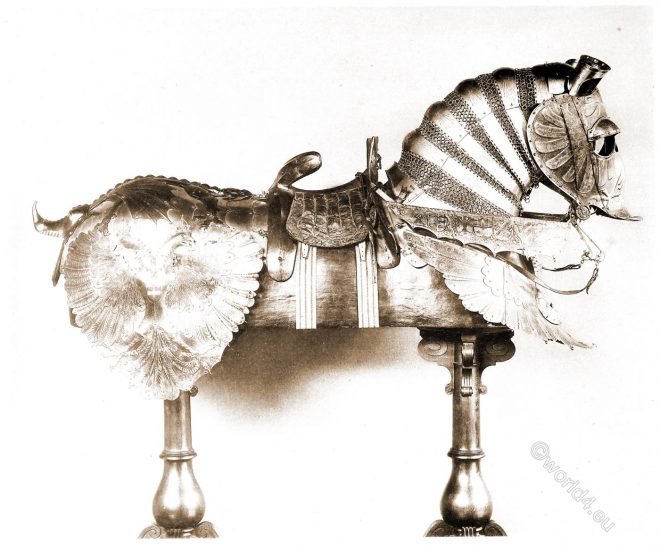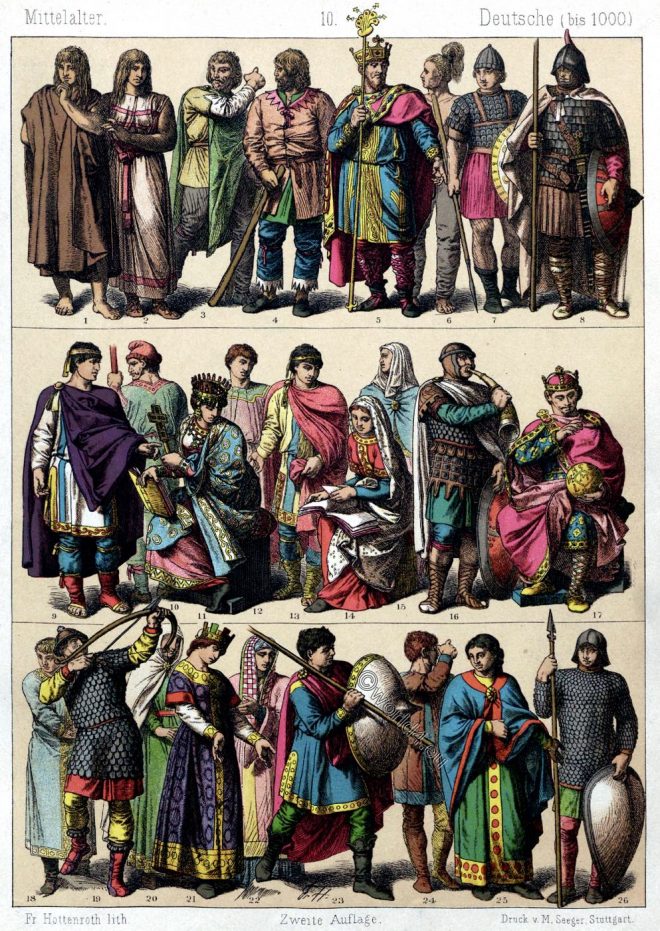His boots are of satin, with thick soles of paper: these are always worn by the mandarines and superior Chinese.
Category: Military
The Roman legionary. Reconstructed after reliefs of the Trajan’s Column.
Roman legionary. Reconstructed after reliefs of the Trajan’s Column.
Greek Military. Two warriors in armor of iron, bronze, and leather.
The two warriors in the picture are wearing or carrying most of the types of war material used by the Greeks for over a thousand years.
Reconstructed Gallic warrior from about 400-200 B.C.
Gallic warrior from about 400-200 before Christ. Reconstructed after antique sculptures and original finds. Gimbel’s weapons collection.
The escape of Charles II after the Battle of Worcester, 1651.
King Charles II escaped, and now entered upon a scene of adventures the most romantic that can be imagined.
Armaments of war from 1350 to about 1460. France. Middle ages.
War armour from 1350 to about 1460, in the period of the Hundred Years War. The development of the Bascinet helmet of the knight’s armour in the Middle Ages
Uniforms of the French Guards since their creation. Costumes of Soldiers.
The French guards since their creation. Soldiers in the 17th and 18th century. Uniforms of Pikiner, Flag bearer, Tambour, Musketeer, Officer.
Indian Grand Mogul Babur leading a campaign. Military Costumes of India.
Babur setting out with his army. Indian Grand Mogul, leading a campaign. War costumes of the 16th century.
Heavy horse armor of Emperor Maximilian I. from c. 1508.
This complete “Rossgelieger” is of excellent quality. The breastplate, called “Fürbug”. The saddle is a so-called “crib saddle”.
German clothing up to the 10th c.. Goths, Lombards, Merovingians.
German people in the dress at the end of the 10th century. Lombard king. Merovingian Franks. Carolingian Franks. Clothing in the Middle Ages.



